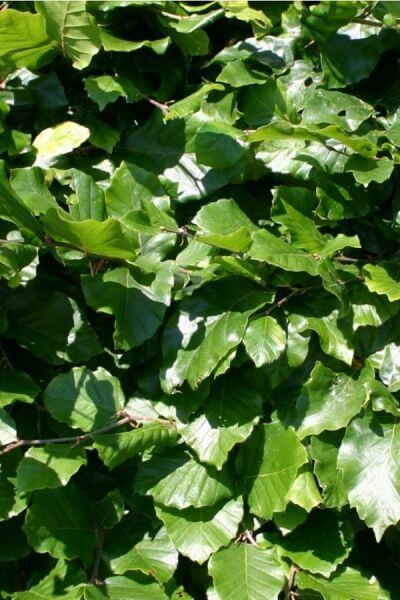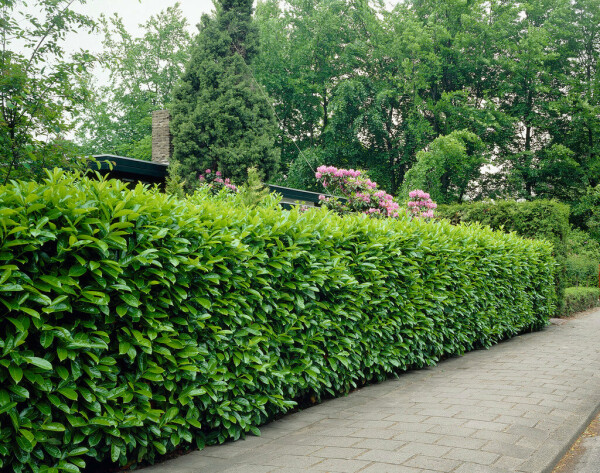Hedge Plants For Partitioning Gardens
Hedge Plants For Partitioning Gardens
Blog Article
Best Hedging Plants For Leaf Color
Boost your garden's attraction with lavish hedge varieties such as Yew (Taxus), Thuja, Laurel, Photinia, and Bamboo, commemorated for their structural integrity and ecological benefits.
Yew and Thuja offer evergreen protection and winter season durability, while Laurel uses fast development and broad, fragrant leaves.
Photinia adds seasonal beauty with its vibrant red foliage, and Bamboo lends a low-maintenance, tranquil ambiance.
These hedges enhance air quality, reduce noise, and develop tranquil, personal spaces.
Appropriate planting, spacing, and upkeep ensure vigorous development and ecological consistency.
Check out how these lush varieties can raise your garden's appeal and wellness.
Key Takeaways
Transform Your Garden With Lush Hedge Ranges
- Select Yew for its thick, evergreen development and unrivaled durability.
- Go with Laurel for its quick growth and broad leaves, guaranteeing quick personal privacy.
- Pick Photinia for its lively seasonal foliage, which turns a striking dark red.
- Make use of Bamboo for a low-maintenance, winter-hardy hedge with aesthetic appeal.
- Space plants 2-3 per meter and prune routinely for optimum development and health.
Popular Hedge Plants
When changing a garden with lush hedge varieties, it's vital to think about popular hedge plants such as Yew, Thuja, Laurel, and Photinia due to their special attributes and advantages.
Yew (Taxus) is highly esteemed for its longevity and dense, green growth, making it a prime choice for enduring landscapes.
Thuja is noted for its evergreen foliage and robust winter resilience.
Photinia includes seasonal vibrancy with red leaves that darken with time, producing vibrant visual appeal.
Laurel provides rapid growth and fragrant, broad leaves, ideal for fast personal privacy.
In Addition, Bamboo is an excellent option for atmosphere, offering a low-maintenance, winter-hardy option that boosts the garden's aesthetic with its stylish, swaying walking canes.
These choices accommodate a range of horticultural needs and preferences.
Advantages of Garden Hedges
Garden hedges use a wide range of benefits, making them an important addition to any landscape. These natural barriers are cost-efficient to carry out and offer significant wind defense, boosting air circulation and adding to sound reduction. The thick foliage of hedges like Thuja and Beech guarantees privacy by blocking exposure, creating a serene and remote environment.
Hedges also play an essential function in microclimate policy, supplying a stable environment that cultivates plant growth and minimizes temperature level fluctuations. Their detailed leaf structures filter contaminants, improving air quality and contributing to a healthier garden environment.
Furthermore, hedges master noise decrease, absorbing and deflecting sound waves to lower ambient sound levels. This dual performance of providing both acoustic and visual privacy boosts the general harmony and aesthetic appeal of any garden.
Planting and Upkeep Tips
For an effective hedge, precise preparation of the planting location is crucial. Guarantee the soil has correct pH and drain to support strong root advancement.
Space the plants appropriately for the picked species. Water the hedge frequently throughout its preliminary growth stage, changing as needed with seasonal changes.
Carry out a organized pest control and disease avoidance method, using chemical or natural treatments when essential. Regularly check for aphids, termites, and fungal infections.
Apply mulch to retain moisture and suppress weeds. Seasonal pruning promotes thick development and air blood circulation, essential for plant health.
Following these guidelines will help you cultivate a vibrant, well-kept hedge that improves the appeal of your garden.
Spacing and Trimming Guidelines
Spacing and Trimming Guidelines
Appropriate spacing and trimming are important for cultivating healthy, aesthetically appealing hedges. Sufficient spacing makes sure each plant gets enough nutrients, light, and air flow.
Follow these standards for optimum hedge upkeep:
- Spacing: Position hedge plants 2-3 plants per meter to motivate robust development.
- Pruning Strategies: Routine pruning is vital for preserving preferred hedge height and shape. Trim new growth in summer and cut down older wood throughout winter season.
- Seasonal Care: Change trimming schedules and techniques according to seasonal requirements to ensure plant health.
- Hedge Height: Regularly display and cut to preserve the preferred hedge height and accomplish uniform visual appeals.
Complying with these steps will ensure your hedge grows, boosting both the appeal and performance of your garden.
Choosing the Right Hedge
Choosing the Right Hedge
Picking the suitable hedge involves evaluating aspects such as mature height, foliage density, and environmental strength. Successful hedge plant choice requires comprehending each types' growth attributes and site-specific adaptability.
For example, Yew (Taxus) offers exceptional durability and dense growth, while Thuja is notable for its winter season durability. In addition, thinking about maintenance requirements is vital; fast-growing species like Laurel or Privet need regular cutting, whereas low-maintenance options like Bamboo or Ivy might be more effective for those looking for very little upkeep.
Ecological factors such as soil type, light accessibility, and wetness conditions ought to likewise direct the choice process. This cautious technique guarantees the picked hedges will thrive, offering both practical and aesthetic advantages to the garden landscape.
Shipment and Planting Guidance
To guarantee your hedge plants thrive, they ought to be provided by specialized carriers and planted quickly upon arrival.
Follow these vital actions for successful planting:
- Soil Preparation: Enhance the soil with natural matter to enhance drainage and nutrient content.
- Planting Depth: Produce a trench two times the width and equal to the depth of the root ball.
- Watering Strategies: Water thoroughly after planting, keeping the soil consistently damp however not saturated.
- Mulching: Apply a layer of mulch to retain moisture and suppress weeds.
Client Assistance and Service
Offered the crucial role of timely support in horticultural pursuits, our client assistance group is readily available 6 days a week through telephone, e-mail, and social media to offer expert advice and promptly address any issues. Their devotion to quick response times makes sure customer fulfillment by fixing queries connected to plant health, ideal planting approaches, and maintenance schedules.

-------------------
Telephone
Within 24 hours
This comprehensive support group, strengthened by a stellar 9.3/ 10 consumer score, highlights our commitment to boosting the gardening experience for each customer.
Often Asked Questions
The Length Of Time Does It Take for Hedge Plants to Develop?
Hedge plants typically require one to 3 years to end up being completely developed, with the precise period varying by types and growing conditions.
Efficient care throughout this crucial duration is important for robust development. Constant watering, vigilant weed control, and proper fertilizer application are pivotal in promoting strong root advancement.
For instance, fast-growing species like Laurel might develop faster, while slower-growing varieties such as Yew might take longer. Persistent upkeep accelerates the establishment procedure, leading to healthy and thick hedges.
What Are the Best Hedge Plants for Privacy?
The concern of the finest hedge plants for privacy involves assessing evergreen and deciduous alternatives.
Evergreen hedges like Thuja, Laurel, and Cypress provide year-round coverage, guaranteeing constant personal privacy.
In contrast, deciduous hedges such as Beech provide seasonal personal privacy, shedding leaves in cooler months.
Secret upkeep tips for personal privacy hedges consist of regular trimming, fertilizing in spring, and appropriate spacing-- usually 2 to 3 plants per meter.
In addition, constant watering and diligent weed removal are essential for promoting healthy, thick development.
Can Hedge Plants Bring In Wildlife to My Garden?
Yes, hedge plants can bring in wildlife to your garden by supplying necessary advantages like shelter, food, and nesting websites, consequently boosting regional biodiversity. For circumstances, yew, holly, and laurel are outstanding for drawing in birds, while ivy supports a variety of insects.
Nevertheless, it's essential to note that there are some drawbacks, such as increased maintenance to handle insects and regular maintenance. Thoroughly choosing and maintaining hedge ranges can assist balance these downsides and advantages, ultimately cultivating a sustainable and dynamic ecosystem in your garden.
Exist Any Flowering Hedge Plants Available?
Yes, there are flowering hedge plants readily available that can improve the beauty of your garden.
For instance, Elaeagnus, also referred to as Olive Willow, produces fragrant white flowers in the fall, adding a touch of sophistication.
Photinia, another popular choice, showcases lively red leaves that develop into an abundant green, producing a vibrant visual impact throughout the seasons.
To make sure these plants flourish, it's necessary to practice appropriate pruning techniques and seasonal maintenance, such as cutting new development in the summer and cutting back in the winter.
These steps will assist maintain the health and visual appeal of your blooming hedges.
How Do I Prevent Insects in My Hedge Plants?
To avoid bugs in hedge plants, employ natural insect control approaches and maintain appropriate hedge care. Present advantageous bugs like ladybugs, which victimize hazardous insects, to develop a balanced community.
Routinely check your hedges for indications of infestation and immediately get rid of any afflicted parts to avoid the spread. Guarantee the health of your hedges by using well balanced fertilizers and supplying appropriate water.
Utilize mulching to retain soil wetness and proper spacing to decrease plant stress and promote robust development. These practices jointly help in lessening bug concerns and keeping a healthy hedge.
Conclusion
In essence, picking the ideal hedge varieties such as Yew, Thuja, and Laurel can change any garden into a tranquil haven. These plants offer year-round plant, improve aesthetic appeal, and offer practical benefits hedge plants like sound decrease and wind defense.
Appropriate planting methods, accurate spacing, consistent watering, and seasonal trimming are vital for optimum development.
Reliable shipment services and skilled client support ensure a smooth experience from purchase to planting, making it easier than ever to elevate your outside area.
Garden hedges provide a multitude of advantages, making them an important addition to any landscape. These natural barriers are affordable to implement and supply considerable wind protection, boosting air flow and contributing to noise decrease. The dense foliage of hedges like Thuja and Beech makes sure privacy by blocking exposure, creating a tranquil and secluded environment.

Pruning Methods: Routine pruning is vital for keeping preferred hedge height and shape. Cut new growth in summer and cut back older wood during winter season.
Report this page